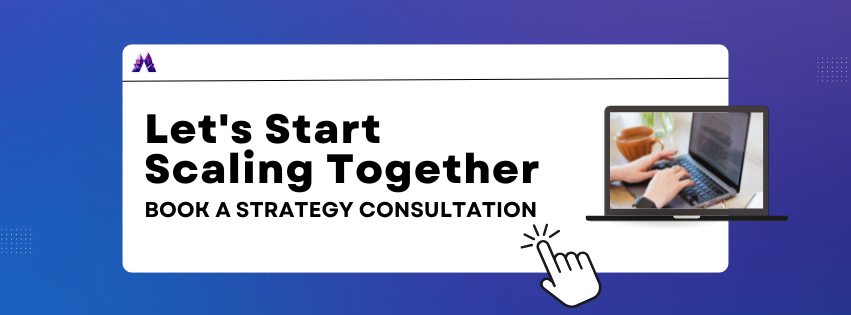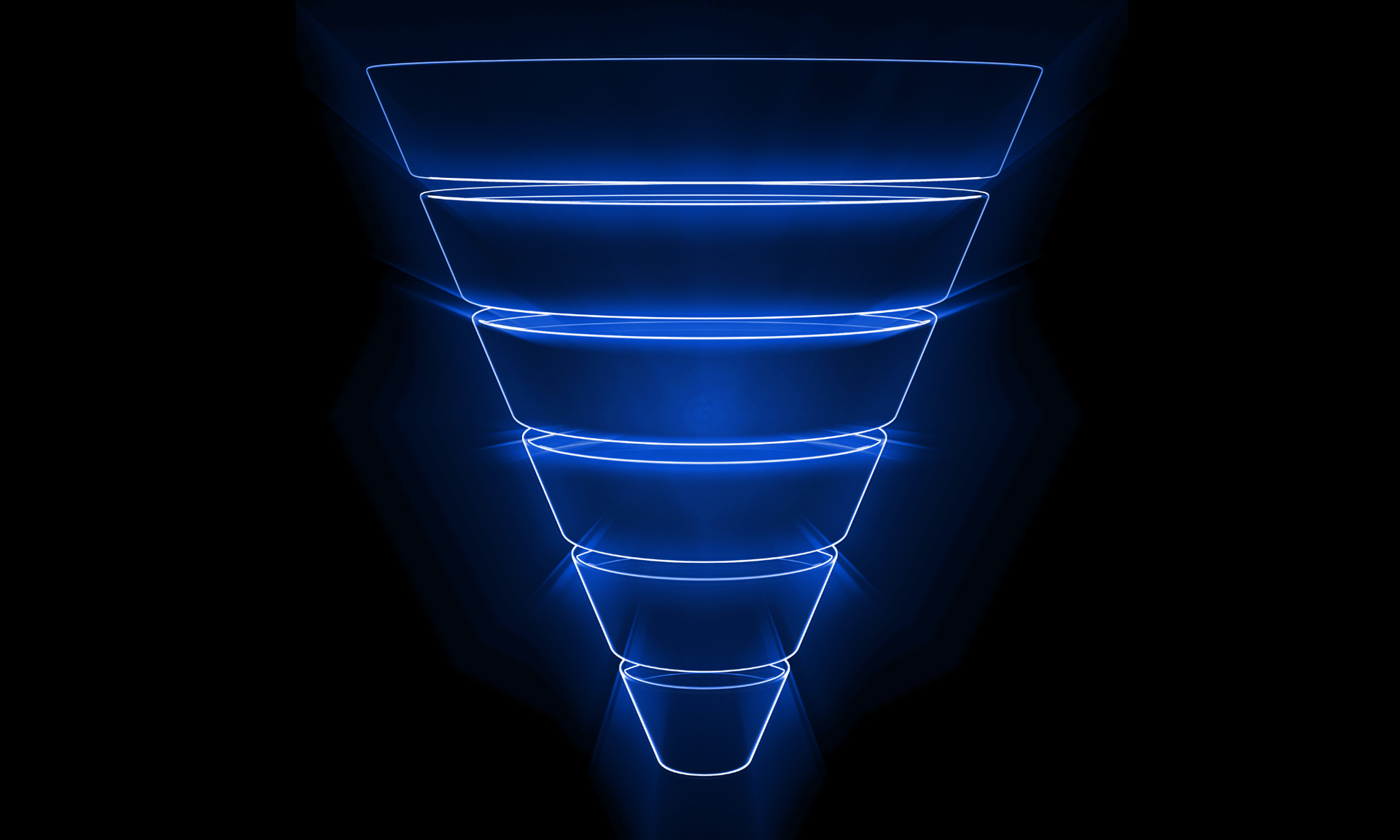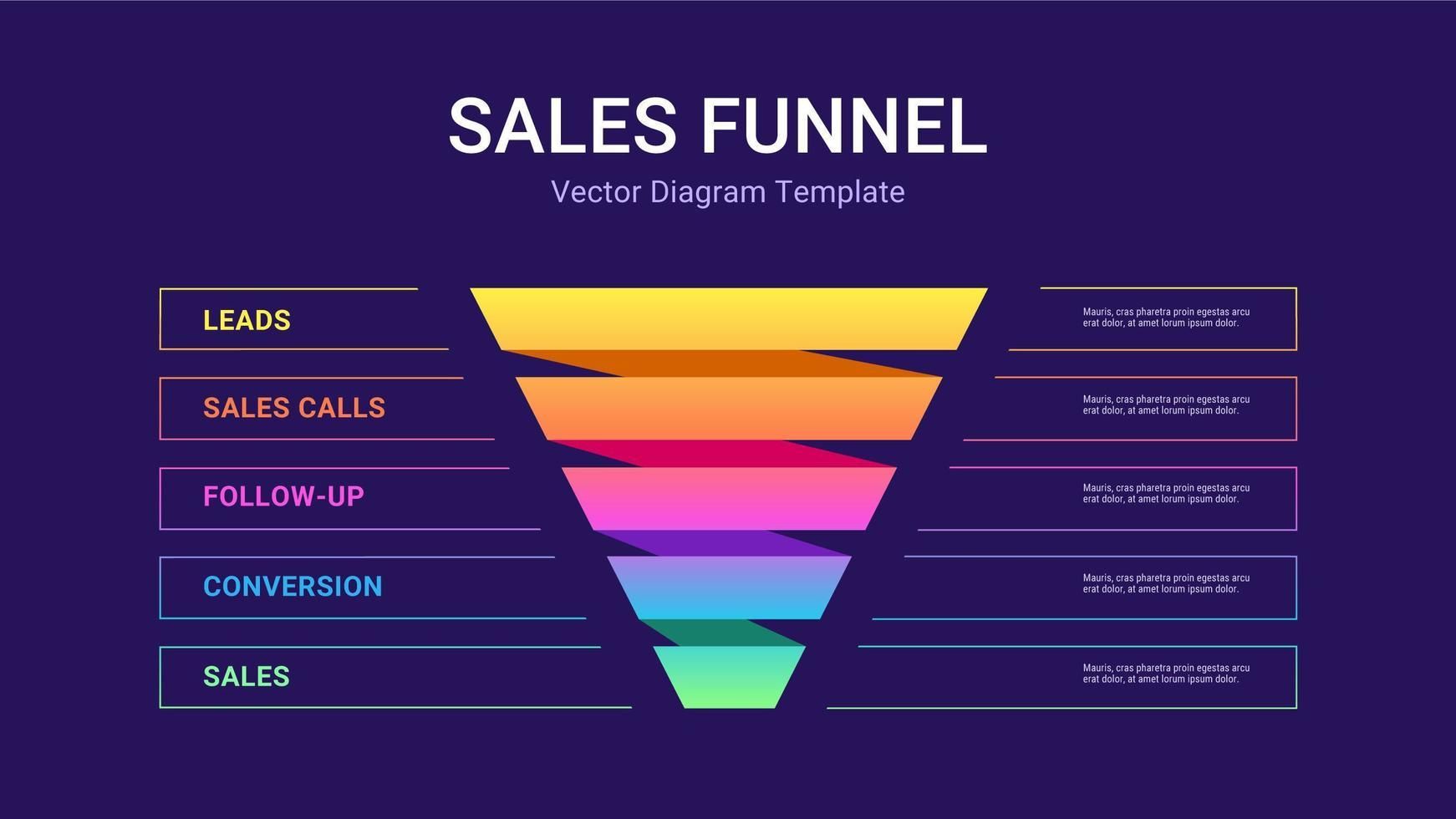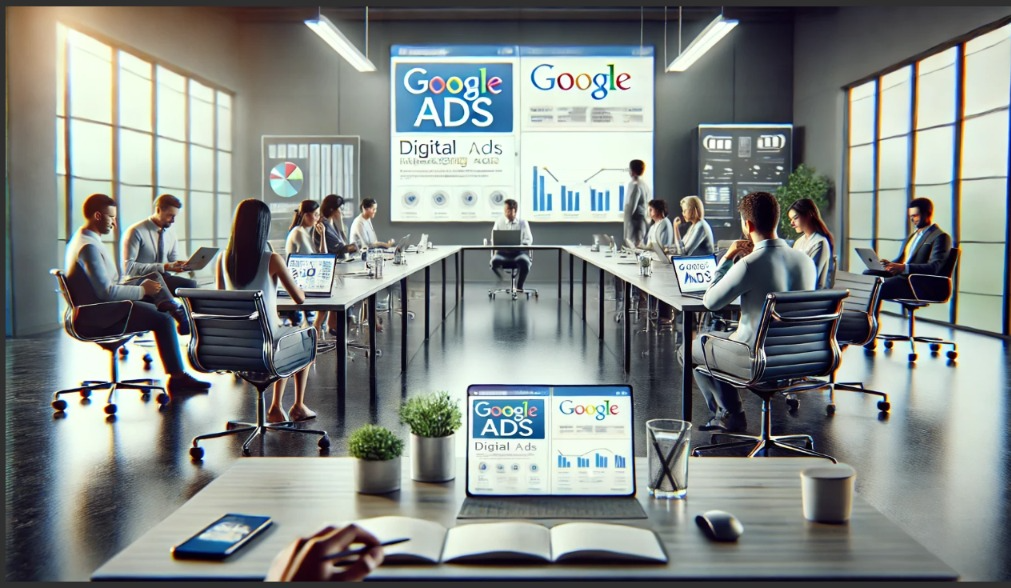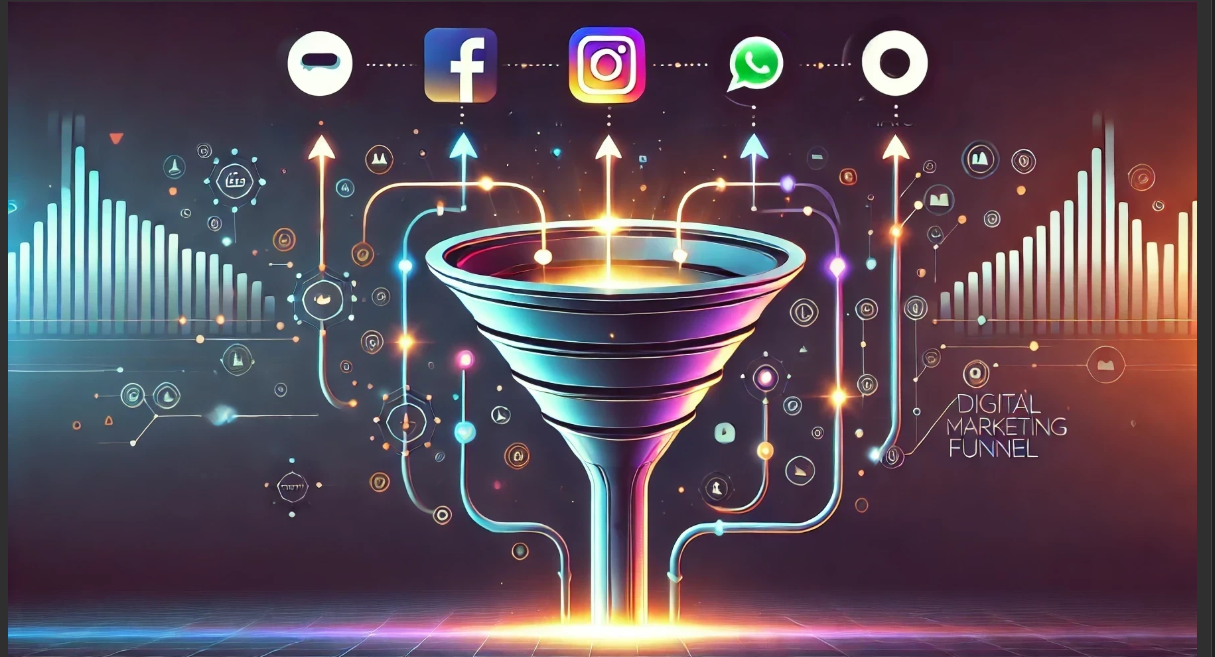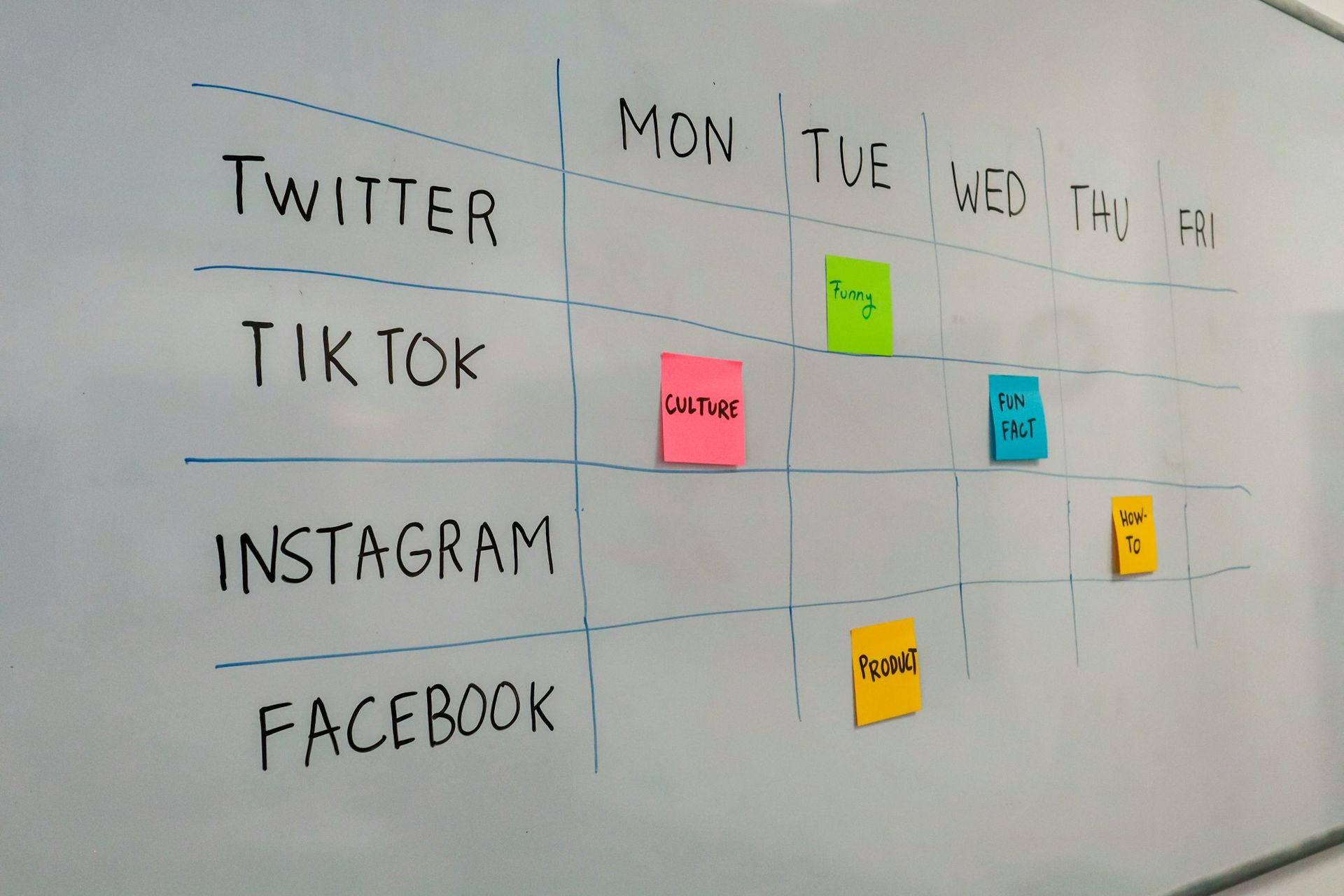What Channels to Integrate for Full Funnel Performance Marketing
What Channels to Integrate for Full Funnel Performance Marketing
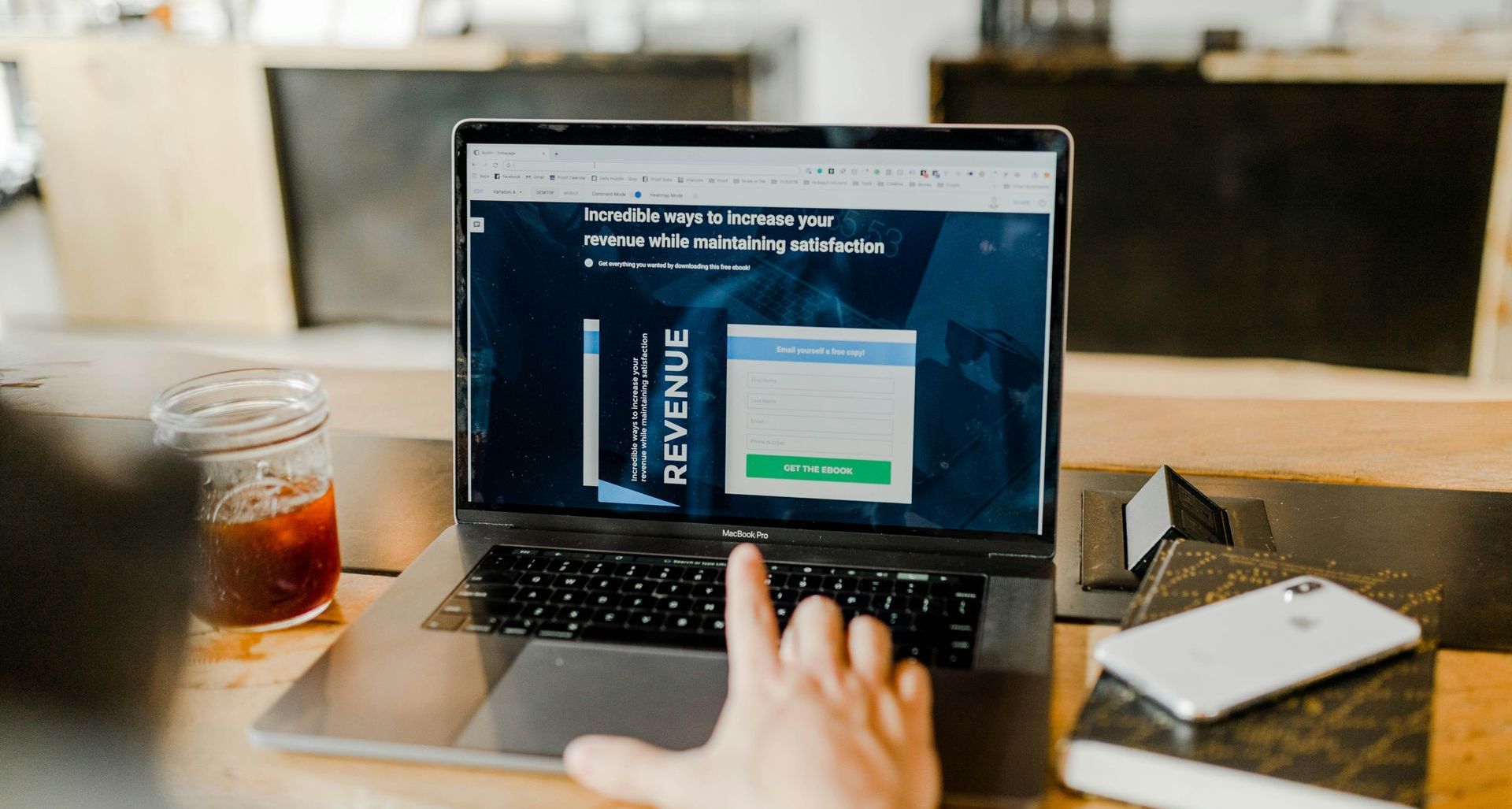
Modern buyers interact with brands across 15+ touchpoints before making a purchase decision. Yet 72% of companies still operate with siloed marketing channels, missing critical opportunities to guide prospects through their entire journey. This disconnected approach costs businesses billions in wasted ad spend and lost conversions.
Full funnel performance marketing represents a strategic approach that integrates multiple channels to create seamless customer experiences from initial awareness to post-purchase advocacy. Unlike traditional single-channel strategies, this methodology ensures every touchpoint works synergistically to drive measurable business outcomes.
In this comprehensive guide, we'll explore the essential channels for each funnel stage and reveal proven integration strategies that leading
performance marketing agencies use to maximize ROI across the entire customer journey.
What’s Inside?
1. Understanding Full Funnel Performance Marketing
- Data-driven approach orchestrating multiple marketing channels
- 75% of marketers now use multi-touch attribution models
- 40% higher conversion rates with proper integration
2. Top-of-Funnel (TOFU) Channels for Awareness
- Search Engine Optimization (SEO) with topic clusters
- Social Media Marketing across LinkedIn, YouTube, and Facebook
- Programmatic Display Advertising with precise targeting
3. Middle-of-Funnel (MOFU) Channels for Consideration
- Email Marketing and Automation with behavioral triggers
- Retargeting and Remarketing across multiple platforms
- Educational Content and Webinars for trust building
4. Bottom-of-Funnel (BOFU) Channels for Conversion
- Search Engine Marketing (SEM) for high-intent keywords
- Direct Response Marketing with urgency tactics
- Sales Enablement Integration with CRM systems
5. Post-Purchase Channels for Retention and Advocacy
- Customer Success Programs with onboarding automation
- Referral and Advocacy Marketing programs
- User-generated content and testimonial campaigns
6. Integration Strategies That Drive Results
- Cross-Channel Attribution Models for performance tracking
- Technology Integration with CDPs and automation platforms
- Organizational Alignment with shared KPIs
7. Common Integration Mistakes to Avoid
- Channel Silos and Poor Handoffs between teams
- Attribution Blind Spots missing cross-device tracking
- Budget Allocation Inefficiencies across funnel stages
8. Measuring Success Across the Full Funnel
- Key Performance Indicators by funnel stage
- Advanced Measurement Techniques like cohort analysis
- Predictive analytics for forecasting performance
Bottom Line First
Full funnel performance marketing delivers 40% higher conversion rates by strategically integrating channels across every stage of the customer journey—from awareness to advocacy. Success requires coordinated channel strategies, advanced attribution modeling, and unified data platforms rather than isolated campaign management.

Understanding Full Funnel Performance Marketing
Full funnel performance marketing is a data-driven approach that orchestrates multiple marketing channels to guide prospects through every stage of the buyer's journey. This strategy differs fundamentally from traditional performance marketing, which typically focuses on bottom-funnel conversions.
The modern approach recognizes that 75% of marketers now use multi-touch attribution models to understand how different channels contribute to conversions. This shift acknowledges that customers don't follow linear paths to purchase – they move between channels, devices, and touchpoints in complex, non-linear journeys.
Core Principles of Effective Integration
- Channel Complementarity: Each channel serves a specific purpose while supporting others
- Unified Messaging: Consistent brand voice and value propositions across all touchpoints
- Data Centralization: Integrated analytics to track cross-channel performance
- Attribution Modeling: Understanding how channels work together to drive conversions
Research from leading performance marketing services providers shows that companies with properly integrated funnels achieve 40% higher conversion rates compared to those using isolated channel strategies.

Top-of-Funnel (TOFU) Channels for Awareness
The awareness stage focuses on reaching new audiences and generating initial interest. Full funnel marketing agencies prioritize channels that offer broad reach while maintaining cost efficiency.
Search Engine Optimization (SEO)
SEO remains the highest ROI channel for B2B marketers according to recent industry surveys. Effective SEO strategies for full funnel marketing include:
- Topic cluster content that addresses different stages of buyer intent
- Long-tail keyword optimization for awareness-stage queries
- Featured snippet optimization to capture voice search traffic
- E-E-A-T compliance followingGoogle's quality guidelines
The key is creating content that naturally progresses users from awareness to consideration stages while building topical authority.
Social Media Marketing
Social platforms excel at generating awareness through both organic and paid strategies:
- LinkedIn for B2B targeting with precise audience segmentation
- Video content on YouTube and TikTok for engaging storytelling
- Instagram and Facebook for visual brand building
- Twitter/X for thought leadership and real-time engagement
Leading agencies integrate social media data with CRM systems to track how social engagement influences later-stage conversions.
Programmatic Display Advertising
Programmatic advertising enables precise audience targeting at scale:
- Contextual targeting based on content themes
- Lookalike audiences derived from existing customer data
- Cross-device tracking for consistent messaging
- Brand safety measures to protect reputation
The key is using programmatic as part of a broader awareness strategy, not as an isolated channel.

Middle-of-Funnel (MOFU) Channels for Consideration
The consideration stage focuses on nurturing leads and building trust. This stage typically shows the highest engagement rates but requires sophisticated automation and personalization.
Email Marketing and Automation
Email remains the third-highest ROI channel across all industries:
- Behavioral triggers based on website activity and engagement
- Progressive profiling to gather additional lead information
- Dynamic content personalization based on buyer personas
- Lead scoring integration to identify sales-ready prospects
Successful performance marketing strategies use email as the primary channel for nurturing leads between awareness and purchase decisions.
Retargeting and Remarketing
Retargeting captures users who showed initial interest but didn't convert:
- Website retargeting for previous visitors
- Social media retargeting across platforms
- Email retargeting for engaged subscribers
- Video retargeting for content viewers
Advanced retargeting strategies segment audiences based on specific pages visited and time spent, delivering increasingly relevant messaging.
Educational Content and Webinars
B2B buyers consume an average of 13 pieces of content before making purchase decisions:
- Webinars and virtual events for direct engagement
- Case studies and success stories building social proof
- Whitepapers and research reports demonstrating expertise
- Interactive tools and calculators providing immediate value
This content should be gated strategically to capture lead information while providing genuine value.

Bottom-of-Funnel (BOFU) Channels for Conversion
Bottom-funnel channels focus on capturing demand and driving immediate conversions. These channels typically show the highest conversion rates but may have limited scale.
Search Engine Marketing (SEM)
Paid search captures high-intent traffic when prospects are ready to buy:
- Brand keyword protection preventing competitor conquest
- High-intent commercial keywords with strong buying signals
- Local search optimization for location-based businesses
- Shopping campaigns for e-commerce businesses
Google Analytics attribution reports help optimize SEM campaigns by showing how paid search interactions contribute to multi-touch conversion paths.
Direct Response Marketing
Direct response tactics create urgency and drive immediate action:
- Limited-time offers creating scarcity
- Free trials and demos removing purchase friction
- Personalized proposals for B2B sales
- Abandoned cart recovery for e-commerce
The key is ensuring these tactics align with earlier-stage messaging to maintain trust and consistency.
Sales Enablement Integration
Bottom-funnel success requires tight sales and marketing alignment:
- Lead scoring and qualification based on engagement data
- Sales intelligence tools providing prospect insights
- Content personalization for sales conversations
- CRM integration ensuring seamless handoffs
For comprehensive insights on choosing the right approach, explore our guide on full funnel advertising strategies.

Post-Purchase Channels for Retention and Advocacy
Post-purchase marketing often generates the highest lifetime value but receives insufficient attention from many organizations.
Customer Success Programs
Proactive customer success drives retention and expansion:
- Onboarding automation ensuring product adoption
- Usage monitoring identifying at-risk accounts
- Expansion campaigns for upselling and cross-selling
- Health scoring predicting churn probability
Referral and Advocacy Marketing
Satisfied customers become powerful marketing channels:
Referral Programs
Referral marketing should be a core element of an integrated strategy. To capture attention and drive conversions, offering compelling referral incentives is crucial. These can include discounts, free trials, exclusive content, or personalized rewards, motivating users to refer others and progress through the sales funnel.
Case study development
Case studies are pivotal in full funnel performance marketing, acting as powerful social proof that builds trust and credibility. In the consideration phase, they demonstrate tangible results and address potential objections, while in the bottom funnel, they validate purchase decisions and encourage conversions.
Review and Testimonial Campaigns
Share case studies that demonstrate how your product or service has solved real problems for others. Encourage satisfied customers to leave reviews and ratings on relevant platforms. Implement a system for gathering and displaying user-generated content, such as photos or videos, that highlight positive experiences. Leverage influencer endorsements to reach a wider audience and build trust.
User-generated content
User-generated content (UGC) is vital for full-funnel performance marketing. Authentic testimonials, reviews, and user media build trust, validate purchases, and improve SEO, driving engagement, reducing costs, and optimizing the customer journey.
Word-of-mouth marketing has become increasingly important as trust in traditional advertising declines.

Integration Strategies That Drive Results
Successful integration requires sophisticated performance marketing strategy execution across technology, process, and organizational dimensions.
Cross-Channel Attribution Models
Understanding channel interactions requires advanced attribution:
- First-touch attribution for awareness channel evaluation
- Last-touch attribution for conversion channel assessment
- Multi-touch attribution for full journey analysis
- Data-driven attribution using machine learning algorithms
According to leading attribution research, companies using advanced attribution models achieve 23% better ROI compared to those relying on last-click attribution alone.
Technology Integration Requirements
Effective integration depends on robust technology infrastructure:
- Customer Data Platforms (CDPs) for unified customer profiles
- Marketing automation platforms for cross-channel orchestration
- Advanced analytics tools for performance measurement
- API integrations ensuring real-time data flow
Organizational Alignment
People and process integration often determines success:
- Cross-functional teams including marketing, sales, and customer success
- Shared KPIs and objectives aligning incentives
- Regular optimization reviews identifying improvement opportunities
- Training programs ensuring team capability development

Common Integration Mistakes to Avoid
Even experienced performance marketing agencies encounter common pitfalls that undermine full funnel effectiveness.
Channel Silos and Poor Handoffs
Isolated channel management creates friction:
- Inconsistent lead definitions between marketing and sales
- Poor data sharing between channel teams
- Conflicting optimization objectives across channels
- Inadequate communication processes for campaign coordination
Attribution Blind Spots
Incomplete attribution understanding leads to poor decisions:
- Over-reliance on last-click attribution undervaluing awareness channels
- Ignoring offline touchpoints missing crucial customer interactions
- Insufficient cross-device tracking fragmenting customer journeys
- Poor view-through attribution missing display advertising impact
Budget Allocation Inefficiencies
Improper budget distribution undermines performance:
- Over-investing in bottom-funnel channels limiting growth potential
- Under-investing in measurement infrastructure reducing optimization capability
- Ignoring channel interactions in budget planning
- Failure to adjust for seasonal patterns and market changes

Measuring Success Across the Full Funnel
Comprehensive measurement requires performance marketing services that track both individual channel performance and cross-channel interactions.
Key Performance Indicators by Stage
Different funnel stages require specific metrics:
Top-of-Funnel Metrics:
- Reach and impressions
- Click-through rates
- Cost per click (CPC)
- Brand awareness lift
Middle-of-Funnel Metrics:
- Lead generation volume
- Email engagement rates
- Content consumption depth
- Lead scoring progression
Bottom-of-Funnel Metrics:
- Conversion rates
- Cost per acquisition (CPA)
- Revenue per conversion
- Sales cycle length
Post-Purchase Metrics:
- Customer lifetime value (CLV)
- Net promoter score (NPS)
- Retention rates
- Expansion revenue
Advanced Measurement Techniques
Sophisticated measurement approaches provide deeper insights:
- Cohort analysis tracking customer groups over time
- Incrementality testing measuring true channel impact
- Marketing mix modeling understanding media interactions
- Predictive analytics forecasting future performance
For detailed guidance on measurement best practices, reference Google's attribution modeling documentation.
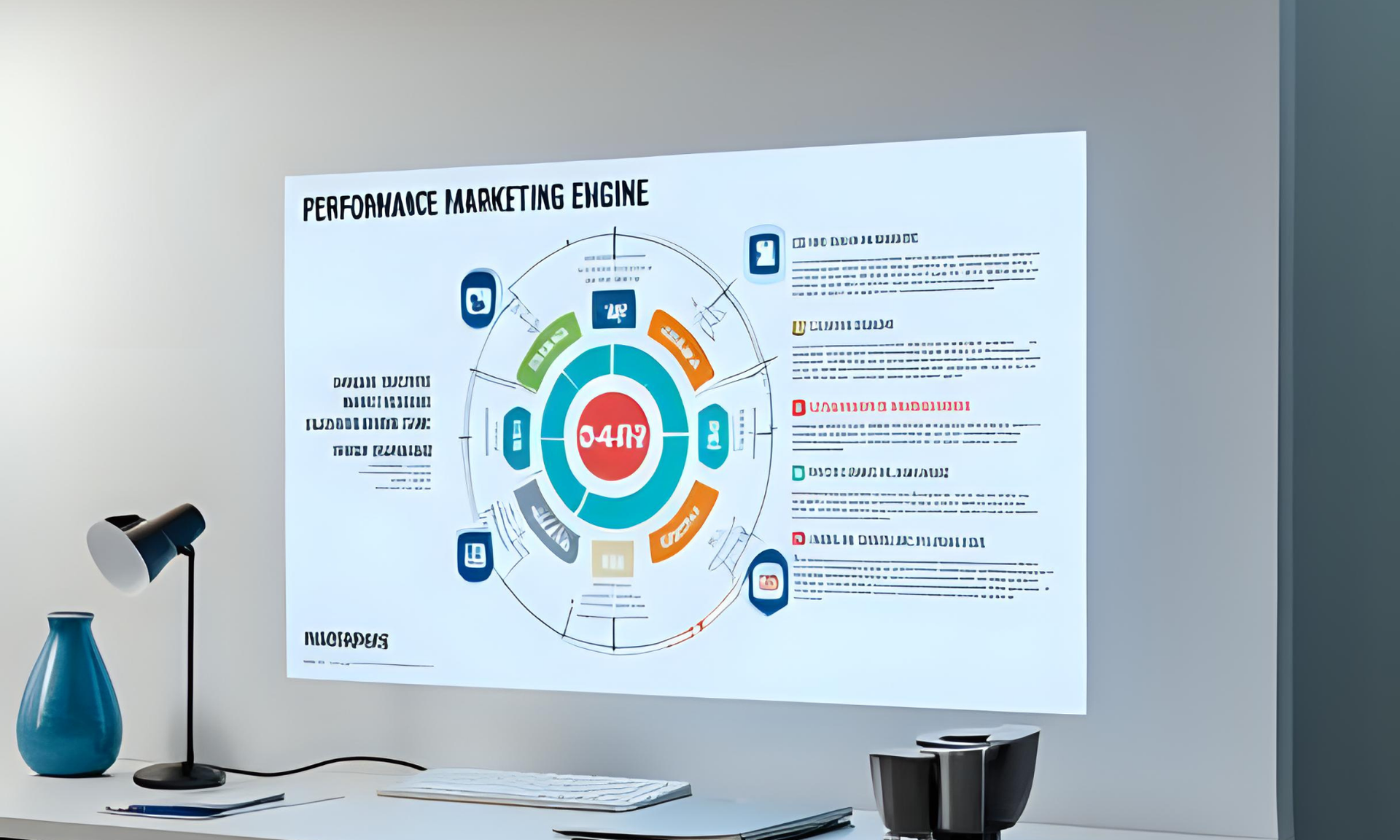
Conclusion
Full funnel performance marketing requires strategic integration of multiple channels to create seamless customer experiences that drive measurable business results. Success depends on understanding how channels complement each other, implementing robust measurement frameworks, and maintaining organizational alignment around shared objectives.
The most effective performance marketing agencies focus on three critical success factors:
- Technology Integration: Unified data platforms enabling cross-channel orchestration
- Process Optimization: Streamlined workflows ensuring consistent customer experiences
- Continuous Improvement: Regular testing and optimization based on performance data
As customer journeys become increasingly complex and competitive pressure intensifies, organizations that master full funnel integration will gain sustainable competitive advantages through improved efficiency, higher conversion rates, and stronger customer relationships.
Want to unlock the full potential of your marketing?
Start bt cheduling a discovery call with Meta Marketing Agency. We'll help you develop a customized, implementation plan perfectly aligned with your business objectives and available resources, driving tangible results.
Book your free strategy session now to transform your approach and maximize your ROI.
Frequently Asked Questions
What is the difference between full funnel performance marketing and traditional performance marketing?
Traditional performance marketing focuses primarily on bottom-funnel conversions and immediate ROI. Full funnel performance marketing integrates channels across all customer journey stages – awareness, consideration, conversion, and retention – to create comprehensive customer experiences that drive both short-term conversions and long-term value.
How do I measure ROI across different funnel stages?
Use stage-appropriate metrics and attribution models. Top-funnel channels should be measured on reach, engagement, and brand lift. Middle-funnel channels focus on lead quality and progression. Bottom-funnel channels emphasize conversion rates and revenue. Advanced attribution modeling helps understand how channels work together to drive overall ROI.
Which channels are most important for B2B full funnel marketing?
For B2B companies, LinkedIn and email marketing typically drive the highest engagement in awareness and consideration stages. Google Ads and direct sales outreach excel in conversion stages. Content marketing and SEO provide consistent long-term value across all stages. The optimal mix depends on your specific audience and buying cycle.
How long does it take to see results from full funnel integration?
Initial improvements typically appear within 3-6 months, but significant ROI gains usually require 9-12 months. Top-funnel investments take longer to show impact, while bottom-funnel optimizations provide faster results. Consistent measurement and optimization are essential for long-term success.
What budget allocation should I use across funnel stages?
Most successful companies allocate 40-50% to top and middle-funnel activities, 30-40% to bottom-funnel conversion, and 10-20% to retention and advocacy. However, optimal allocation depends on your business maturity, growth objectives, and current funnel performance. Regular testing helps identify the most effective distribution for your specific situation.
How do I choose the right performance marketing agency for full funnel strategies?
Look for agencies with demonstrated experience in multi-channel integration, advanced attribution modeling, and your specific industry. Evaluate their technology capabilities, measurement frameworks, and case studies showing improved cross-channel performance. Ensure they can provide both strategic guidance and hands-on execution across all funnel stages.
Key Takeaways
Strategic Foundation
- 75% of marketers now use multi-touch attribution models to understand how channels work together
- Modern buyers interact with 15+ touchpoints before purchasing, making integration essential
- Channel complementarity beats channel competition when properly orchestrated
Channel Strategy by Stage
- TOFU (Awareness): SEO + Social Media + Programmatic Display for broad reach
- MOFU (Consideration): Email Automation + Retargeting + Educational Content for nurturing
- BOFU (Conversion): SEM + Direct Response + Sales Enablement for closing
- Post-Purchase: Customer Success + Referrals + UGC for retention and growth
Integration Success Factors
- Technology Integration: CDPs and marketing automation platforms for unified customer profiles
- Attribution Modeling: Multi-touch attribution over last-click to understand true channel impact
- Organizational Alignment: Cross-functional teams with shared KPIs and regular optimization reviews
Critical Mistakes to Avoid
- Channel Silos: Poor handoffs between marketing and sales teams
- Attribution Blind Spots: Missing cross-device and offline touchpoint tracking
- Budget Misallocation: Over-investing in bottom-funnel while neglecting awareness and consideration
Measurement Framework
- Stage-Specific Metrics: Different KPIs for each funnel stage (reach → engagement → conversion → retention)
- Advanced Analytics: Cohort analysis, incrementality testing, and predictive modeling
- ROI Timeline: Initial improvements in 3-6 months, significant gains in 9-12 months
Implementation Priority
- Start with attribution modeling to understand current channel interactions
- Integrate technology platforms for unified customer data
- Align teams around shared objectives and cross-channel KPIs
- Test and optimize continuously based on performance data
The companies that master full funnel integration gain sustainable competitive advantages through improved efficiency, higher conversion rates, and stronger customer relationships.











